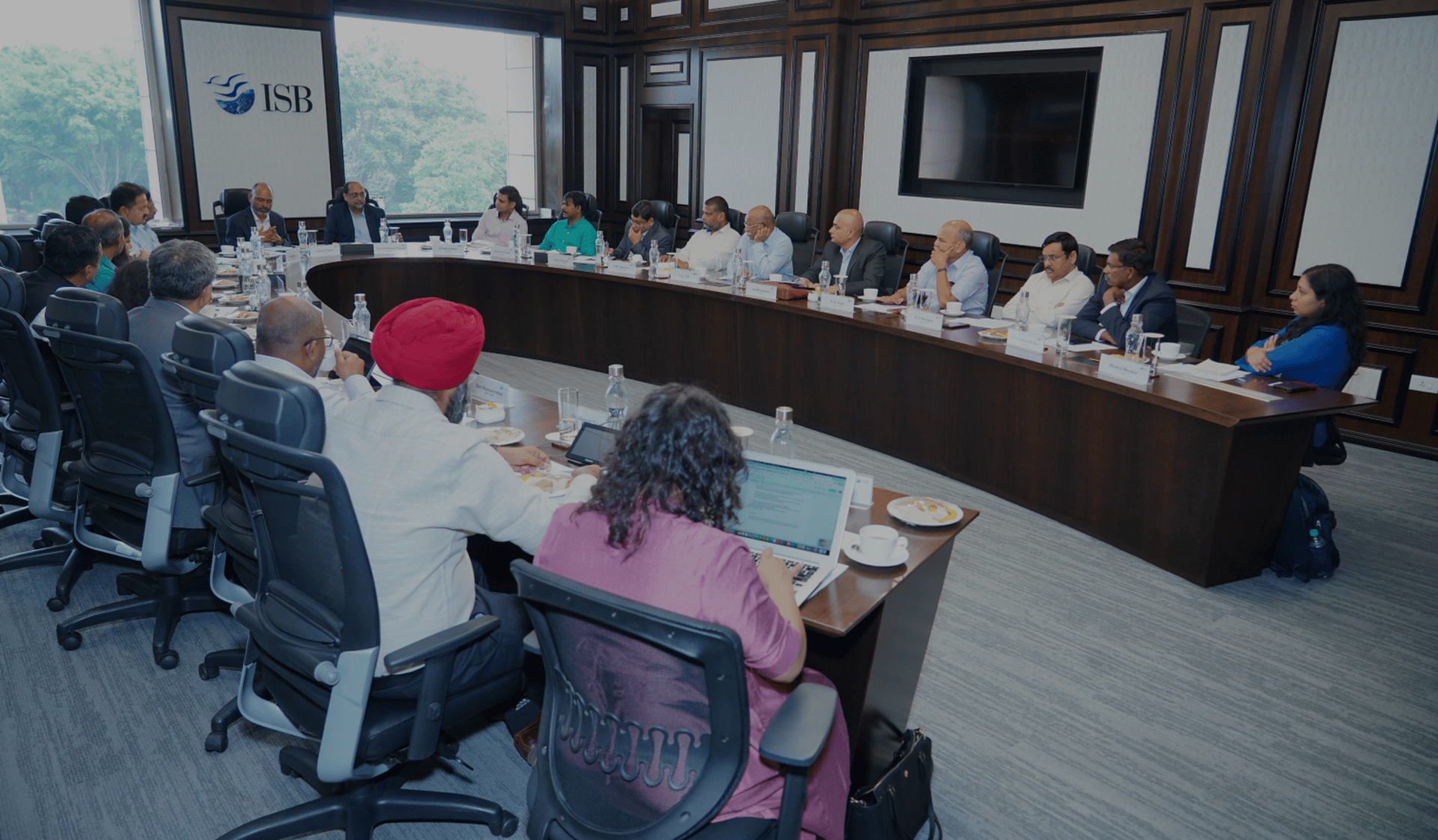
Andhra Pradesh Roundtable: Sustainable Bamboo Forest Economy through Security of Tenure
The Initiative on the Forest Economy (IoFE) at the Indian School of Business (ISB), Hyderabad, in collaboration with the Government of Andhra Pradesh, hosted the Andhra Pradesh Roundtable on 30 October 2023. The event convened senior government officials, private sector leaders, finance organisations, and academic institutions to explore opportunities within Andhra Pradesh’s bamboo forest landscapes. It sought to enable Radical Forest Futures—a vision of a thriving, robust, and sustainable forest economy that benefits people, planet, and profit.
The Roundtable was chaired by Shri Neerabh Kumar Prasad, an Indian Administrative Service (IAS) officer and Special Chief Secretary, Environment, Forest, Science & Technology Department, Government of Andhra Pradesh. It was co-moderated by Prof. Ashwini Chhatre, Executive Director of the Bharti Institute of Public Policy, ISB, and Mr Madhusudhana Reddy, an Indian Forest Service (IFS) officer and Principal Chief Conservator of Forests–Head of Forest Force (PCCF–HoFF).
About the Event
The discussion began by examining Andhra Pradesh’s abundant bamboo resources and current management challenges. Stakeholders assessed historical extraction policies, bidding systems, contract durations, and logistics inefficiencies. They also highlighted bamboo’s climate benefits and the need for regular, sustainable harvesting.
The session then turned to the reactivation of Andhra Pradesh’s Vana Samrakshana Samitis (VSSs) as a means to foster community-led forest management and enterprise. The discussion recognised that to enable forest landscapes to contribute to a sustainable economy, integrating production and marketing is essential. Opportunities were identified in the biofuel, textile, pulp, and furniture sectors.
Context and Objectives
The Round Table further examined the policy framework required for building a sustainable forest economy. It emphasised the need for convergence and integration across various sectors to meet the rising demand for bamboo and support emerging technologies that improve efficiency. The discussion revisited India’s history of forest exploitation in the 1970s and the subsequent regulatory restrictions on industry access. Since the mid-1990s, carefully monitored economic activity has been allowed, supported by checks and balances to promote both regeneration and protection. These efforts have shown that forest-based economic activity is viable and beneficial. A synergy between regeneration and livelihoods was identified as central to realising the forest economy’s potential.
Building on this context, particular attention was given to India’s E20 mandate, which requires a 20 percent ethanol blend with petrol by 2025. Meeting this target will require rapid expansion of ethanol production capacity. Traditional feedstocks, such as sugarcane and rice, are insufficient to sustain this output and risk undermining food security if diverted. Forest resources—especially bamboo—emerged as a valuable, sustainable alternative.
Policy and Practice for a Thriving Forest Economy
Three Key Levers of a Bamboo-Based Forest Economy
Security of Tenure
Security of tenure was recognised as essential for long-term, sustainable forest management. It provides forest-dependent communities with legal and economic ownership, enabling them to enter into transparent, formal, and economically viable engagements with industries. Examples from around the world were shared to highlight how secure tenure has catalysed successful multi-stakeholder partnerships.
Economies of Scale through Technology
Technology was identified as a major driver of efficiency. For example, a bamboo splitter that divides poles into four to six strips at the point of harvest can double the tonnage transported per truck. Other tools—such as moisture meters and calorific value measuring devices—can support quality assurance and improve resource management at source. Such investments become viable at scale, particularly when communities form enterprises that consolidate operations across multiple villages. Furthermore, technology would play a key role in accurately measuring and attributing the benefits of carbon sequestration and other value-generating outcomes for industrial partners.
Market Linkages and Community-Owned Enterprises
The importance of community-owned enterprises in accessing large buyers was emphasised. A well-integrated ecosystem could align the interests of industries across the ethanol, textile, paper, cosmetic, and agarbatti (incense stick) sectors. For instance, bamboo pulp could serve multiple industries, while the silica-rich outer rim could be used in others. Industries were encouraged to invest in community-owned enterprises or farmer-producer organisations (FPOs) as secure, long-term suppliers. Such models, grounded in economic opportunity rather than charity, could deliver mutual benefits—supporting biodiversity, women’s empowerment, and carbon sequestration.
Emerging Considerations for the Forest Economy Model
Community Participation
A key gap noted during the Roundtable was the absence of forest-dependent communities, who are central stakeholders in the forest economy model. Participants projected that over the next 5–10 years, strengthened leadership and enterprise capacity would enable active community participation in such meetings.
Collaborative Governance
The development of innovative models, such as the forest economy model, requires ongoing dialogue, trust building, and sustained collaboration. The cohort emphasised the need for systems or protocols to shape business models that benefit communities, industries, and forests alike. The Roundtable acknowledged the dual nature of forests—as both conservation assets and commercial opportunities. Historically, forests have contributed little to revenue, as protection was prioritised over economic use, limiting their potential role in a thriving forest economy.
Furthermore, the discussion highlighted the need for improved forest maintenance. Inadequate upkeep hampers bamboo harvesting and weakens landscape health. With 23 per cent of the state’s area under forest cover, participants agreed that regular bamboo harvesting is vital to forest management. It prevents gregarious flowering, reduces fire hazards, improves ground-level light penetration, and supports overall ecosystem function.
The Roundtable also examined the role of industries in strengthening the bamboo-based forest economy. Despite being the world’s second-largest source of bamboo, India continues to import bamboo for industrial use, including agarbatti production. Of the more than 300 native bamboo species, only a few are suited for this purpose. Moreover, current practices utilise only the top green skin of the bamboo, with the remaining 95 per cent discarded due to the absence of downstream industries.
Participants highlighted China’s integrated bamboo ecosystem, where multiple industries process different parts of the plant. This model offers a pathway for India to maximise the use of its bamboo resources by creating segmented value chains. Establishing such ecosystems—especially for species-specific use—was seen as critical to unlocking economic potential.
Bamboo’s value as a sustainable energy source was also a central theme. Compared to coal, bamboo has a high gross calorific value (GCV), making it an attractive alternative. Industries, such as cement industries, are prepared to conduct large-scale trials, as bamboo chips under 40 mm are suitable for cement kilns, simplifying initial processing. In contrast, attempts to use agricultural waste have faced high collection costs and low recovery, making bamboo a more viable option.
Participants noted that adopting bamboo as a coal replacement supports circular carbon use and positions industries to earn carbon credits. Technologies, such as biochar production and torrefaction, can enhance the GCV, further increasing value. The biofuel sector, particularly, presents a ready market—with ₹2 per GCV considered a competitive benchmark. Compared to refuse-derived fuel (RDF), produced from domestic and business waste, bamboo is more sustainable as it not only replaces coal but also integrates carbon dioxide into circularity.
Beyond energy applications, bamboo also offers solutions across sectors. In thermal power generation, it supports ecological resilience by improving soil and water conditions. Bamboo can also be used in compressed biogas (CBG) production. The methane extraction process leaves behind residue, which can be repurposed as bio-fertiliser, adding further economic and environmental value.
In the handicraft sector, integrating technology was recognised as vital for improving efficiency and quality. Combining machine-based production with artisanal skills could yield globally competitive products. Resource mapping was recommended to align bamboo availability with industrial demand, enabling better planning and investment.
Participants also emphasised two additional aspects:
1. Subsidy-Free models: Stakeholders stressed the importance of building models free of subsidies and charity. While ample capital exists, community-level management skills and stakeholder convergence are required to develop viable business models.
2. Government as enabler and regulator: The government should act as a facilitator and regulator, without directly participating in business models. Crucially, participants agreed that industries should not control forest landscapes directly. Instead, raw material procurement should occur through formal arrangements with community-owned enterprises, backed by secure tenure.
Building an Enabling Ecosystem
The discussion concluded with the recognition that a coordinated ecosystem—linking industry, community enterprises, government, and research institutions—is essential. The Andhra Pradesh Forest Department (APFD) was identified as a key facilitator of sustainable practices. Its role will include supporting forest management protocols and ensuring traceability in value chains through certification systems.
To build long-term capacity, the Indian Institute of Forest Management (IIFM) will lead community training programmes. These efforts will focus on sustainable harvesting, enterprise development, and environmental stewardship. Financial organisations also confirmed the availability of various lending instruments and the inclusion of such projects under priority sector lending.
Industry Perspectives and Opportunities
To translate the Roundtable’s discussions into tangible outcomes, participants resolved to initiate three pilot projects by the end of November 2023. Each project will represent a unique district–industry combination and will be designed around specific industrial requirements. These needs will inform the development of tailored value chains encompassing technology, finance, community ownership, and capacity building.
The pilots will be implemented through multipartite collaborations involving VSSs, industry partners, APFD, and key stakeholders in technology and finance. Grounded in viable business models and secure supply chains, these projects will operate independently of subsidies or charitable support.
Dedicated teams will be formed for each pilot, comprising representatives from industries, the state government, ISB, IIFM, and relevant technology and finance partners. These teams will meet regularly to refine implementation plans and ensure effective coordination.
A core component of the pilots will be supporting VSS populations in securing Community Forest Resource Rights (CFRR) under the Scheduled Tribes and Other Traditional Forest Dwellers (Recognition of Forest Rights) Act, 2006—commonly referred to as the Forest Rights Act (FRA). Alongside this, efforts will focus on nurturing community-led enterprises, which are essential for building sustainable, resilient, and inclusive industrial value chains.
Furthermore, ISB and APFD will collaborate to improve bamboo inventory estimation and develop a high-accuracy model for bamboo distribution and abundance.
The Roundtable represents a significant milestone in reimagining forest landscapes as engines of sustainable development. Through committed, cross-sector collaboration, the state is well-positioned to unlock the full potential of its bamboo resources—fostering economic resilience, ecological integrity, and community empowerment.
